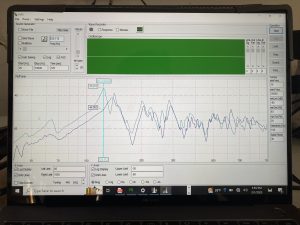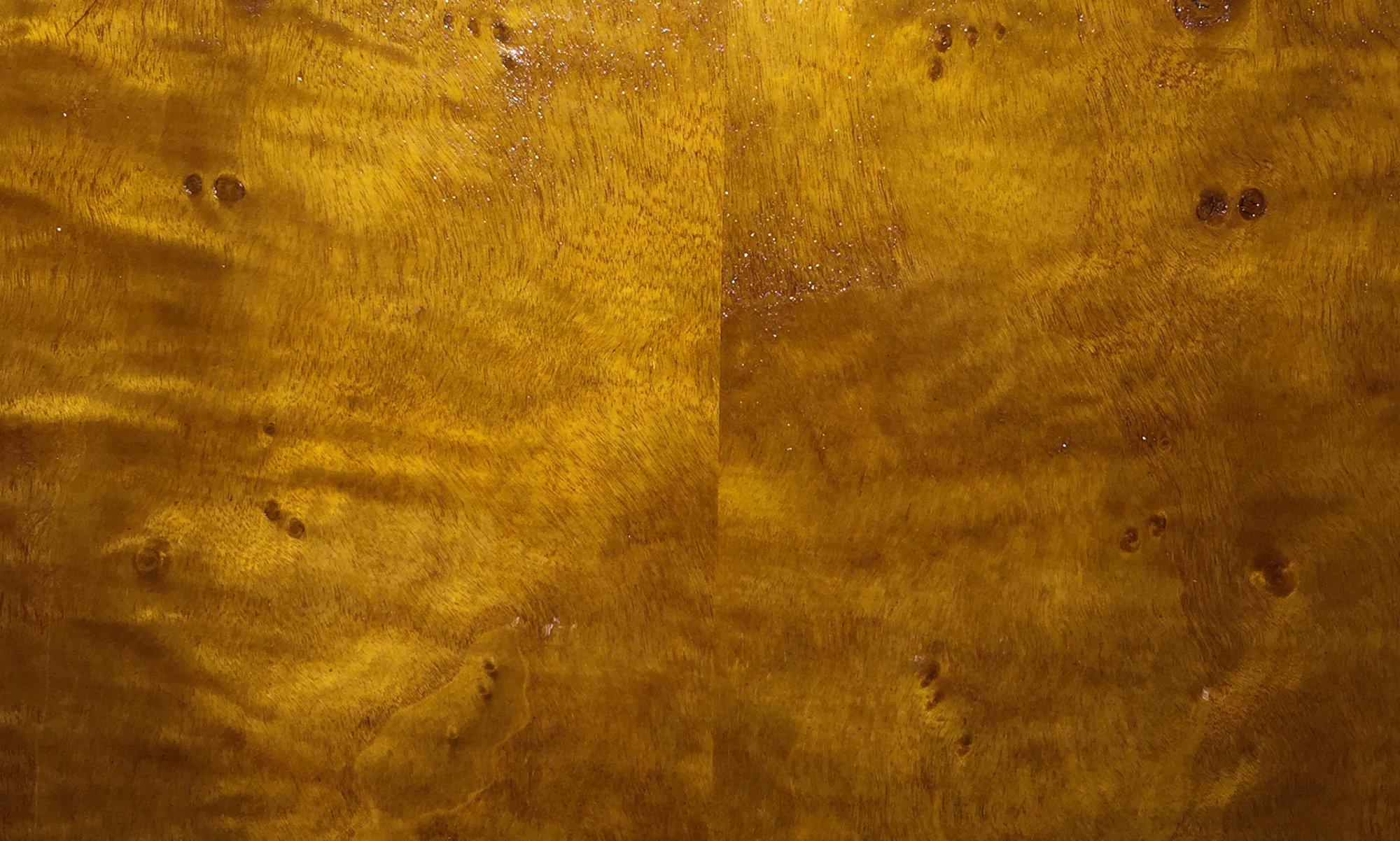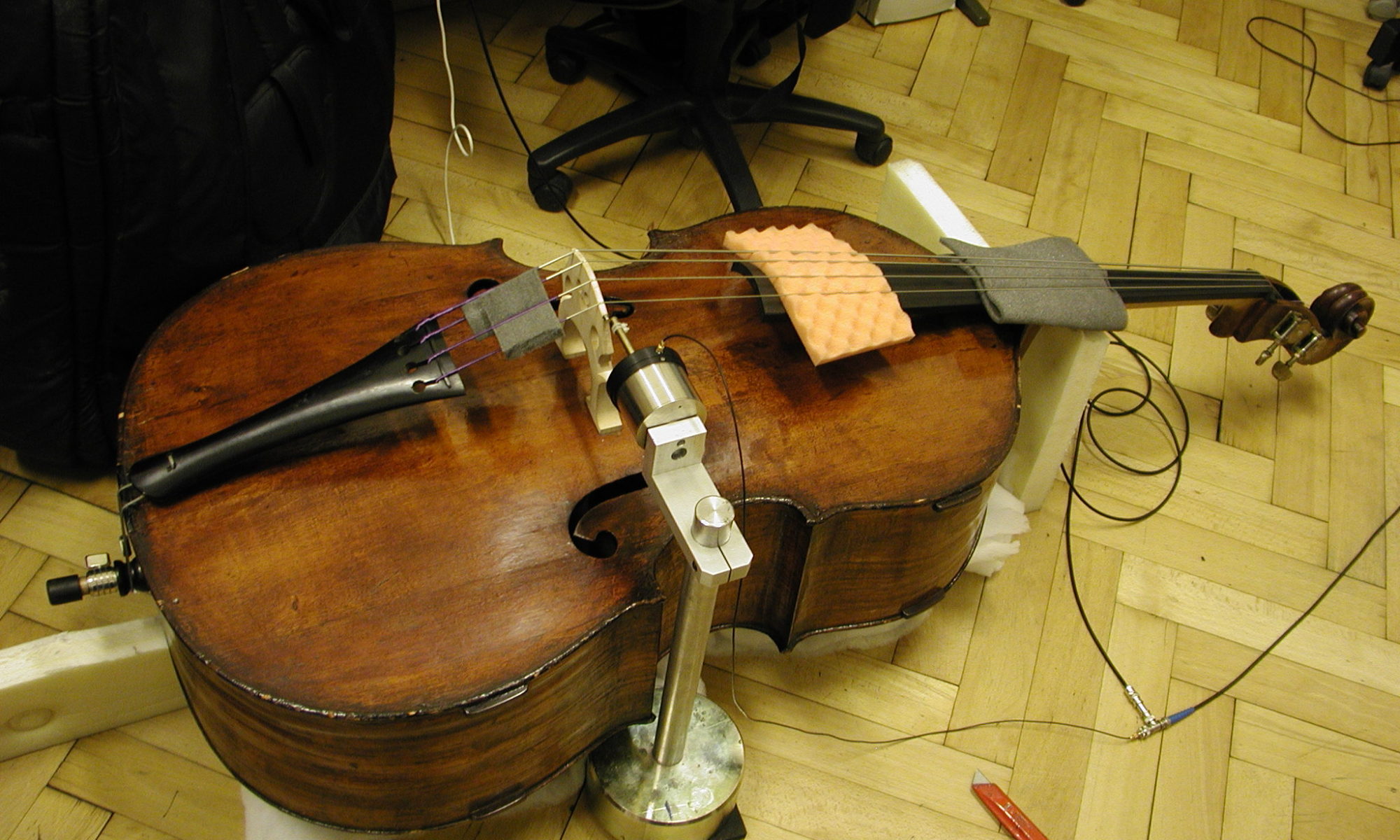Research on music instruments has a rich history, but it’s fair to say we are experiencing a “golden age” of knowledge and its application about the physical function of the violin family. I have played my small part by publishing papers on the acoustics of bass bridge height adjusters and flat- and round-backed basses (see links below). I currently use an impulse response measurement system to guide my work.

I worked for about five years at the Acoustics Research Team (IWK) of the University of Music and Dramatic Arts, Vienna, Austria, first as a graduate student, then as a research adjunct and Ph.D. candidate. Skip to my publications below…
Toward the end of my time as a bass student with Josef Niederhammer in 1998, I was in search of a Master’s thesis. As it happened, I brought a bass to Vienna from New York (pictured) which had bridge height adjusters installed. My fellow student, Peter S., asked if it didn’t affect the sound of the instrument, and I couldn’t answer that question. That’s how I wound up knocking on the door of Matthias Bertsch at the IWK. In the course of the next two years, he, Gregor, Wilfried and Alex were some of the most interested and supportive mentors I could have had to learn academic concepts and skills necessary to put a decent scientific paper together. I will always be indebted to them, the University and indeed the city of Vienna and the nation of Austria for providing such great resources in the name of culture and knowledge, and asking so little in return.

The successful paper was published in 1999, and the answer to the question was a little complex: the machines definitely influence the tone of the instrument depending on the material, but the player can mask these differences, and the low frequency, long wavelengths in the room and and diminished sensitivity of the human ear in the range of the double bass are perhaps just as significant in tone.
The IWK just happened to need a string player and an English native speaker for the new VIAS system and publication proof-reading, and offered me a part time job with regular pay. This worked well with my playing schedule, as the hours were flexible. It also fit with my part time work at the violin shop of Christine Eriks in Argentinierstrasse, around the corner from the Austrian Broadcasting Station (ORF) in the fourth district. Also, the Music Hochschule reformed into a university, which then enabled applied music students like myself to enter a Ph.D. program in partnership with the University of Vienna for the very first time. The conservative forces at the old university, which were very considerable, did throw some roadblocks in my way, and it took a whole semester of correspondence until my registration as a Ph.D. student was complete.
The dissertation topic had to do with the form of the bass compared to other bowed instruments: many basses still in use have a flat back with braces, like a guitar, while I found no violins, violas or cellos ever having such a back. Why? Three years later, after a period of intense (mental and physical) effort, and putting up with one particularly unhelpful professor whose passing grade I could not succeed without, I completed the paper. Even as I was poised to reap the benefits of completing the work, and enjoy ever-better engagements as a free-lance bassist in one of the world’s great music capitals, some personal events in my life prompted me to apply for a job as a music teacher at the German School Washington, D.C. The application was successful, and my career switched gears away from academia and toward music education.

Now, I am still involved with teaching, but the focus has been on building new instruments and repairing and renting houses. I use the impulse hammer analysis on my instruments while building them, but I haven’t published a paper in years.

